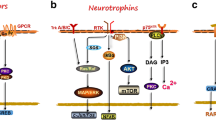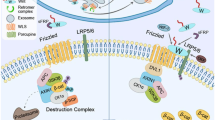Abstract
In this study, attempts were made to replace damaged myocardium of adult rats with embryonic grafts. To this purpose pieces of embryonic ventricular myocardium were prelabelled with 4′,6-diamidino-2-phenylindole and placed into a damaged area of the host myocardium. The hearts containing the grafts were then examined between 2 days and 5--7 months later. Initially the 4′,6-diamindino-2-phenylindole labelled cells were localized only at the site of grafting, but by 2--5 weeks they migrated along the ventricular surface of the heart. Nevertheless the greatest density of grafted cells was always found in the damaged area. At all time points studied, the myogenic phenotype of the 4′-6-diamindino-2-phenylindole-labelled cells was maintained, as the cells contained myosin heavy chains. In addition, immuno labeling with antibodies against cardiac gap junction proteins revealed that initially gap junctions were scattered within the transplanted tissue but with time they became more organised, firstly by alignment into rows along the developing myofibres and then into structures that resembled intercalated discs. Thus the grafted embryonic cardiac myocytes survived in an adult host myocardium and expressed characteristics typical of heart cells
Similar content being viewed by others
References
BRODSKY, V. Y., CARLSON, B. M., AREFYEVA, A. M. & VASILEVA, I.A. (1988) Polyploidization of transplanted cardiac myocytes. Cell Differ. Rev. 25, 177–84.
BUGAISKY, L. B. & ZAK, R. (1989) Differentiation of adult rat cardiac myocytes in cell culture. Circulation Res. 64, 493–500.
CLAYCOMB, W. C. (1991) Proliferative potential of the mammalian ventricular cardiac muscle cell. In The development and regeneration potential of cardiac muscle (edited by OBERPILLER, J. O. & OBERPILLER, J. C.) pp. 351–63: Harwood.
CONNOLD, A. L., FRISCHKNECHT, R. & VRBOVÁ, G. (1995) Survival of embryonic cardiac myocytes transplanted into host rat soleus muscle. J. Muscle Res. Cell Motil. 16, 481–9.
CONNOLD, A. L., FRISCHKNECHT, R. & VRBOVA, G. (1996) A simple method for cardiac surgery in rats. Cell Transplantation 5(3), 405–9.
FROMAGET, C., EL AOUMARI, A. E. & GROS, D. (1992) Distribution pattern of connexin 43, a gap junctional protein, during the differentiation of mouse heart myocytes. Differentiation 51, 9–20.
GOURDIE, R. G., GREEN, C. R., SEVERS, N. J. & THOMPSON, R. P. (1992) Immunolabelling patterns of gap junction connexins in the developing and mature rat heart. Anat. Embryol. 185, 363–78.
JOCKUSCH, H., MEHRKE, G. & FUCHTBAUER, E.-M. (1983) Beating heart muscle in a skeletal muscle bed. Exp. Neurol. 81, 749–55.
LOMPRE, A. M., NADAL-GINARD, B. & MAHDAVI, V. (1984) Expression of the cardic ventricular alpha-and beta-myosin heavy chain genes is developmentally and hormonally regulated.J. Biol. Chem. 259, 6437–46.
NAG, A. C. & CHENG, M. (1986) DNA synthesis of adult mammalian cardiac muscle cells in long-term culture. Tissue Cell 18, 491–7.
RUMYANTSEV, P. P. & BORISOV, A. B. (1987) DNA synthesis in myocytes from different myocardial compartments of young rats in norm, after experimental infarction and in vitro. Biomed. Biochim. Acta 46, 5610–15.
SEVERS, N. J. (1990) The cardiac gap junction and intercalated disc. Int. J. Cardiol. 26, 137–73.
SINHA, A. M., UMEDA, P. K., KAVINSKY, C. J., RAJAMANICKAM, C., HSU, H. J., JAKOVCIC, S. & RABINOWITZ, M. (1982) Molecular cloning of mRNA sequences for cardiac alpha-and beta-form myosin heavy chains: expression in ventricles of normal, hypothyroid and thyrotoxic rabbits. Proc. Natl. Acad. Sci. USA 79, 5847–51.
SOONPAA, M. H., GOUH YOUNG KOH, KLUG, M. G. & FIELD, L. J. (1994) Formation of nascent intercalated disks between grafted and foetal cardiomyocytes and host myocardium. Science 264, 98–101.
SWYNGHEDAUW, B. (1986) Developmental and functional adaptation of contractile proteins in cardiac and skeletal muscles. Phys. Revs. 66(3), 710–71.
TARNOWSKI, B. I., SPINALE, F. G. & NICHOLSON, J. H. (1991) DAPI as a useful stain for nuclear quantitation. Biotech. Histochem.1052-0295/6606 296–302.
TATE, J. M. & OBERPILLER, J. O. (1989) Primary cell culture and morphological characterisation of ventricular myocytes from the adult newt, Notophthalmus viridescens. Anat. Rec. 224, 29–42.
TUCKER, D. C., SNIDER, C. & WOODS, W. T. (1988) Pacemaker development in embryonic rat heart cultured in occulo. Pediatr. Res. 23(6), 637–42.
WHALEN, R. G. & SELL, S. M. (1980) Myosin from foetal hearts contains the skeletal muscle embryonic light chain. Nature 286, 731–3.
ZAK, R. (1974) Development and proliferation capacity of cardiac muscle cells. Circ. Res. 34-35(Supp II), 17–26.
ZAK, R. (1994) An E-Box/M-CAT hybrid motif and cognate binding protein(s) regulate the basal musclespecific and cAMP-inducible expression of the rat cardiac α-myosin heavy chain gene.
Author information
Authors and Affiliations
Rights and permissions
About this article
Cite this article
CONNOLD, A.L., FRISCHKNECHT, R., DIMITRAKOS, M. et al. The survival of embryonic cardiomyocytes transplanted into damaged host rat myocardium. J Muscle Res Cell Motil 18, 63–70 (1997). https://doi.org/10.1023/A:1018680900305
Issue Date:
DOI: https://doi.org/10.1023/A:1018680900305




